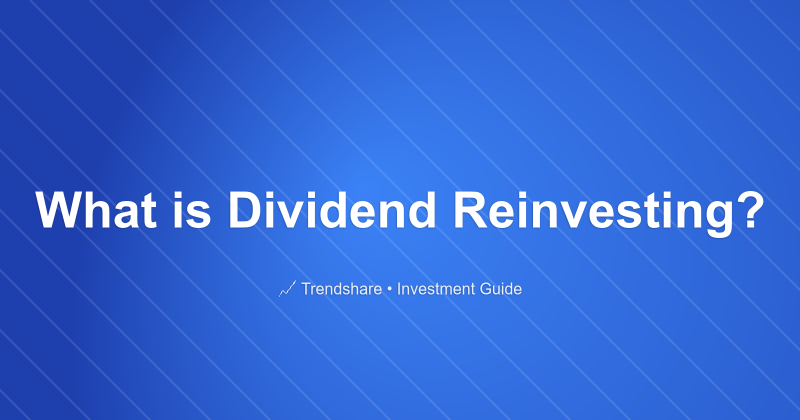
What is Dividend Reinvesting?
By Ethan Mercer
Financial Technology Analyst • 10+ years in fintech and payments
What is dividend reinvesting? Should you reinvest dividends? What reinvestment means for your stock portfolio?
Everyone knows the goal of a business is to make money. Next year, the goal is to make more than this year. The strategy of how this is done—and the milestones the business reaches along the way—differ from business to business.
Some stocks pour all of their free cash back into the business to invest and to expand. Other companies pay some of that free cash back to investors in the form of dividends. There are good reasons to pay dividends and good reasons not to pay dividends; no approach is automatically better than any other.
Whatever the stocks you own do, hopefully they make the right choices. That leaves other choices for you, such as what do you do with dividend payments?
If you're investing for income, you probably cash out those dividends and treat that money as income. That's an easy answer, and it may be the right one, but it's not the only choice.
What is Dividend Reinvestment?
If you're investing for growth, you have more options. Suppose you own shares of Coca-Cola. It pays a healthy dividend every quarter, so you can almost set your calendar on getting a little bit of money for every share of KO you own. That money could sit in your brokerage account, perhaps earning a tiny bit of interest, until you eventually spend the money or invest it in something else.
Another option is reinvesting your dividends with a DRIP. A dividend reinvestment program (DRIP) is a voluntary program which takes the quarterly payments you've earned and uses them to buy as many shares of the stock as possible—even if you have to buy fractional shares. In other words, dividend reinvesting allows you to automatically buy more of the company with the profits you've made from the company.
This example uses Coca-Cola because Coca-Cola has a great shareholder service which allows direct stock purchase and dividend reinvesting. Not all companies do this, but many broker services provide this feature for all stocks.
Should You Reinvest Dividends or Take Cash?
Why should you reinvest dividends? It's quick and easy, and if you've found a great company you want to own for a long time, you don't even have to think about it. It just happens every three months—you own a little bit more of the company. Just like compound interest, your ownership compounds, and you make a little bit more in dividends next quarter and can buy a few more shares.
This strategy is nice and simple. It doesn't require much analysis—just check in every so often to see if a good company remains good. You keep your money working for you, building on itself. (It also works well with dollar-cost averaging.)
Why wouldn't you reinvest dividends? Perhaps there's a better place to put your sudden windfall. Perhaps you believe Coca-Cola's current price is not a bargain (you're glad you own it, but you have your eye on another undervalued stock). You also may have to pay fee; Coca-Cola has been criticized in the past for charging for its direct-stock purchase plan and its DRIP. If you're paying fees of 2% or 3%, you're giving away lot of potential gains.
You may be able to avoid these transaction costs by going through your online broker, but this isn't always the secret how to reinvest dividends for free. Depending on what you have to pay in taxes and fees—and the current price for the stock sending you the check—you might have better places to put that money.
How to Think about Dividends
You're legally entitled somehow to the money the business earns, whether the directors of the company pay it out in dividends, reinvest it in the business somehow, or buy back their own stock. The question is what to do with dividends when you get them.
One way to think of any dividend is as first going to cover the cost of the broker fees spent buying the stock. A $10 dividend check has earned back the $4 or $8 or $10 spent buying the shares in the first place. Another $10 will cover the cost of eventually selling the shares.
Beyond that, do whatever makes sense at the time. If the company has room to grow, a dividend is free money to own more of a good company. Otherwise, average dividend yield is 2-3% annually. Fortunately, you have several weeks between the announcement of the dividend and its amount and its payment date to figure out where it makes sense to reinvest dividends or not.
Whatever you decide, if you put that money back in the market, you're letting that money work for you to earn you more money. That's investing.
Investment Disclaimer
This article is for educational purposes only and does not constitute investment advice. Stock prices, financial metrics, and market conditions change constantly. Company examples are provided for illustration and should not be considered recommendations. Always verify current data from official sources such as company investor relations pages or SEC filings, assess your own risk tolerance and investment objectives, and consult a qualified financial advisor before making investment decisions. Past performance does not guarantee future results.